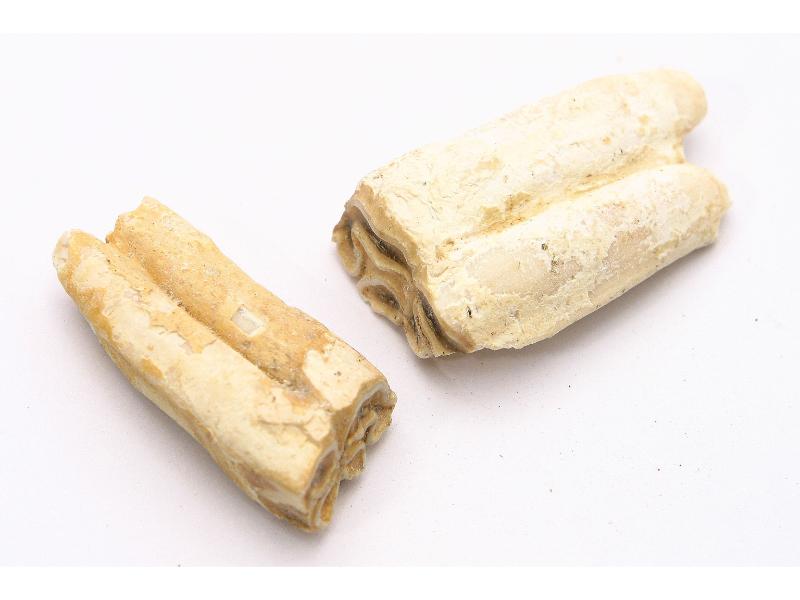Search in medicinals
Mastodi Dentis Fossilia
Dragon tooth
龙齿 〔龍齒〕 lóng chǐ

Kingdom: Animal
Origin in PRC Pharmacopoeia: Fossilized canine teeth or molars from various animals. The whole or broken fossils of canine teeth or molars come in two colors, white or bluish gray. (PRC Pharmacopoeia)
Use: Medicinal
Category: Spirit-quieting agents / Heavy settling spirit-quieting agents
Properties: Sweet, astringent; cool.
Channel entry: Heart and liver channels.
Actions and indications: Lóng chǐ is primarily used for fright wind and epilepsy, mania and withdrawal, heart palpitation, and insomnia. It is better than lóng gǔ at settling fright and quieting the spirit. It is applied in the same way as lóng gǔ but tends to be used in its crude form.
Dosage and method: Oral: 9–15g in decoctions (boil for a long time). Compare
Product description: Whole or broken fossils of the canine teeth or molars. The canine teeth, about 7 cm long and 3 cm in diameter, are tapering and often slightly curved. They are often hollow near the tips. The molars, about 5 cm long, are cylindrical and often squared. They have various kinds of ridges and grooves. Dragon tooth comes in two colors white or bluish gray, these being known respectively as white dragon tooth (bái lóng chǐ 白龙齿) and black dragon tooth (qīng lóng chǐ 青龙齿 qīng lóng gǔ).
Quality: Black dragon tooth is considered superior to white dragon tooth.
Production area: Hénán, Héběi, Shānxī, Inner Mongolia.
Etymology: The name lóng chǐ 龙齿, literally dragon tooth,
reflects the perceived origin of the fossil.
See: Lóng gǔ (龙骨 Mastodi Ossis Fossilia, dragon bone)
Back to search result Previous Next